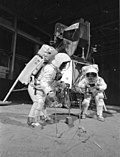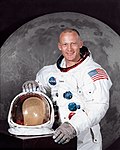Search results
The page "Sv/NASA" does not exist. You can create a draft and submit it for review or request that a redirect be created, but consider checking the search results below to see whether the topic is already covered.
- Sievert (Sv))The sievert (symbol: Sv) is a unit in the International System of Units (SI) intended to represent the stochastic health risk of ionizing radiation, which...68 KB (6,617 words) - 21:39, 17 March 2024
- volume which extends about 65° on either side of the celestial equator. The NASA Van Allen Probes mission aims at understanding (to the point of predictability)...38 KB (4,489 words) - 08:17, 6 April 2024
 dose of 1 Sv (1000 mSv), or 1 Gy, will cause mild symptoms of acute radiation sickness, such as nausea and vomiting; and a dose of 2.0–3.5 Sv (2.0–3.5...57 KB (7,066 words) - 10:35, 1 April 2024
dose of 1 Sv (1000 mSv), or 1 Gy, will cause mild symptoms of acute radiation sickness, such as nausea and vomiting; and a dose of 2.0–3.5 Sv (2.0–3.5...57 KB (7,066 words) - 10:35, 1 April 2024 Martin/General Dynamics RB-57F Canberra (section NASA)in 1968.[citation needed] Four of the survivors were subsequently used by NASA for high-altitude atmospheric research. The others were retired from 1972...42 KB (5,577 words) - 18:09, 10 April 2024
Martin/General Dynamics RB-57F Canberra (section NASA)in 1968.[citation needed] Four of the survivors were subsequently used by NASA for high-altitude atmospheric research. The others were retired from 1972...42 KB (5,577 words) - 18:09, 10 April 2024 Moon landing conspiracy theories (category Wikipedia articles incorporating text from NASA)the Apollo program and the associated Moon landings were hoaxes staged by NASA, possibly with the aid of other organizations. The most notable claim of...146 KB (16,856 words) - 16:23, 30 March 2024
Moon landing conspiracy theories (category Wikipedia articles incorporating text from NASA)the Apollo program and the associated Moon landings were hoaxes staged by NASA, possibly with the aid of other organizations. The most notable claim of...146 KB (16,856 words) - 16:23, 30 March 2024 112 to 175 μGy/day, with dose equivalent rates ranging from 264.3 to 413 μSv/day. The International Space Station, orbiting with an inclination of 51.6°...16 KB (1,611 words) - 01:31, 4 January 2024
112 to 175 μGy/day, with dose equivalent rates ranging from 264.3 to 413 μSv/day. The International Space Station, orbiting with an inclination of 51.6°...16 KB (1,611 words) - 01:31, 4 January 2024- NASA design study for an ambitious large space station envisioned 4 metric tons per square meter of shielding to drop radiation exposure to 2.5 mSv annually...53 KB (6,395 words) - 01:48, 16 February 2024
 source, which is in the public domain. "NASA – NASA Rover Finds Clues to Changes in Mars' Atmosphere". NASA. Archived from the original on 26 December...207 KB (18,767 words) - 12:32, 15 April 2024
source, which is in the public domain. "NASA – NASA Rover Finds Clues to Changes in Mars' Atmosphere". NASA. Archived from the original on 26 December...207 KB (18,767 words) - 12:32, 15 April 2024- SV 163)"Aeronautical Emergency and Abnormal Checklists: Expectations and Realities" (PDF). NASA Ames Research Center. Retrieved 12 January 2017. Thomson, Jim (2013). "Human...22 KB (2,182 words) - 22:51, 10 April 2024
 Buzz Aldrin (category Recipients of the NASA Distinguished Service Medal)Massachusetts Institute of Technology (MIT), Aldrin was selected as a member of NASA's Astronaut Group 3, making him the first astronaut with a doctoral degree...119 KB (12,323 words) - 21:16, 11 April 2024
Buzz Aldrin (category Recipients of the NASA Distinguished Service Medal)Massachusetts Institute of Technology (MIT), Aldrin was selected as a member of NASA's Astronaut Group 3, making him the first astronaut with a doctoral degree...119 KB (12,323 words) - 21:16, 11 April 2024
- Phutthi-Chao-Yu-Hua.... His Majesty's nose is styled in the Pali form Phra-Nasa.... The Siamese term the (Catholic) missionaries, the Preachers of the Phra-Chao
- on human tissue. For X-rays it is equal to the absorbed dose. The sievert (Sv) is the SI unit of equivalent dose, which for X-rays is numerically equal
)











